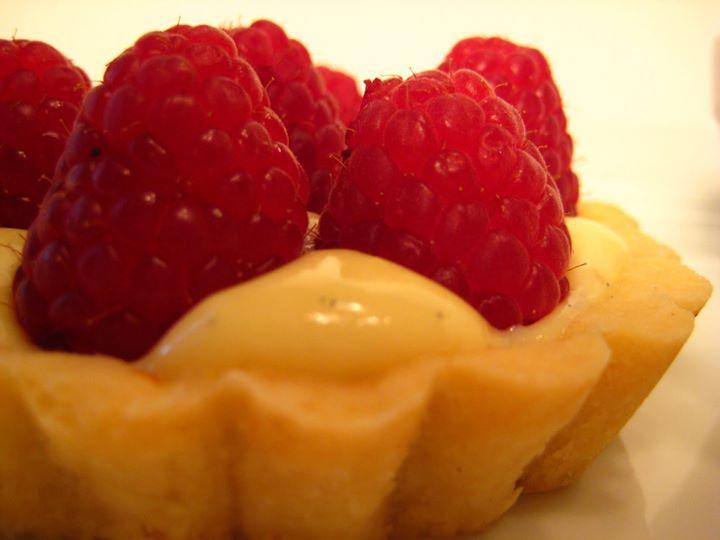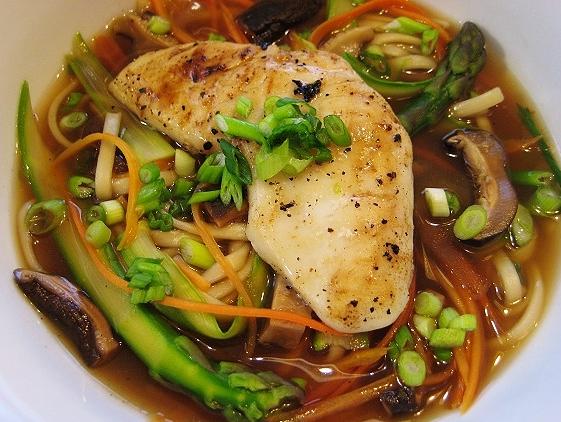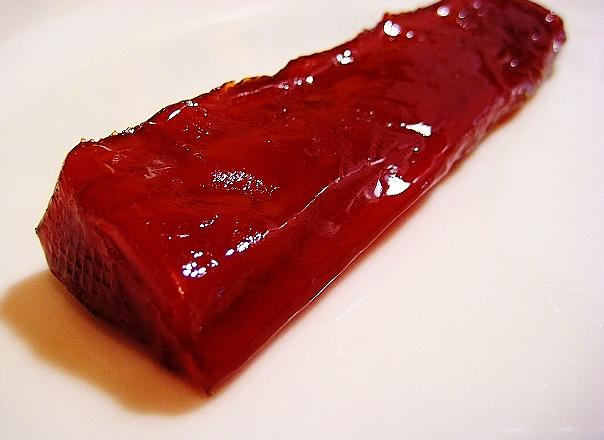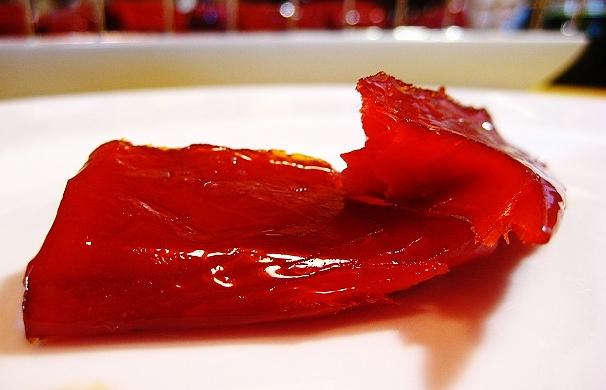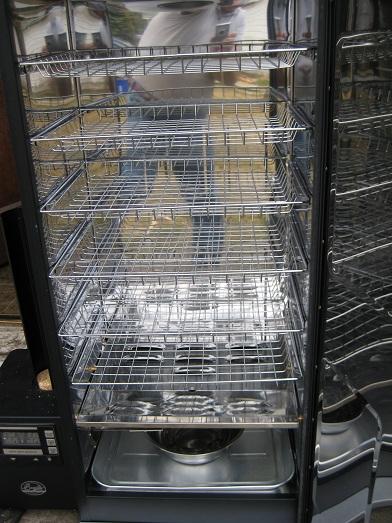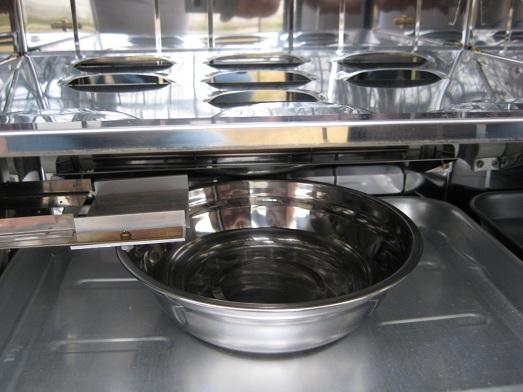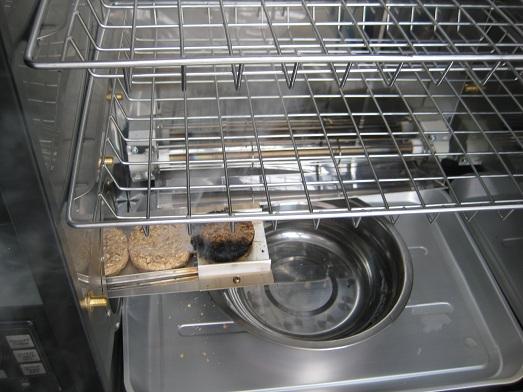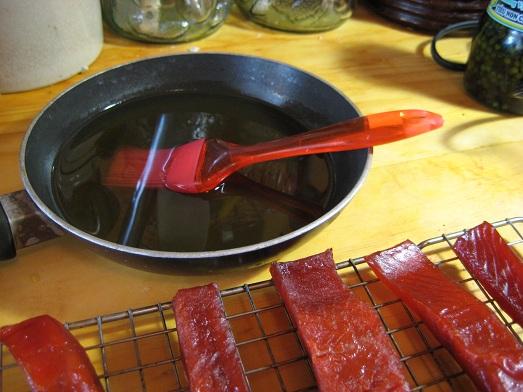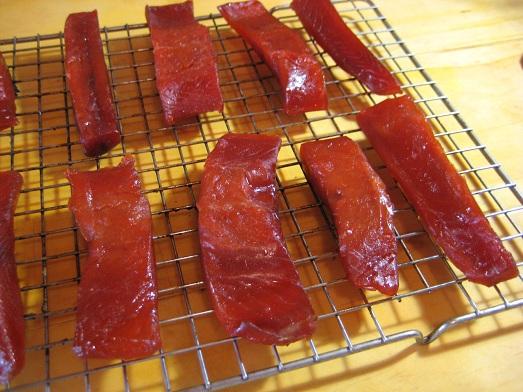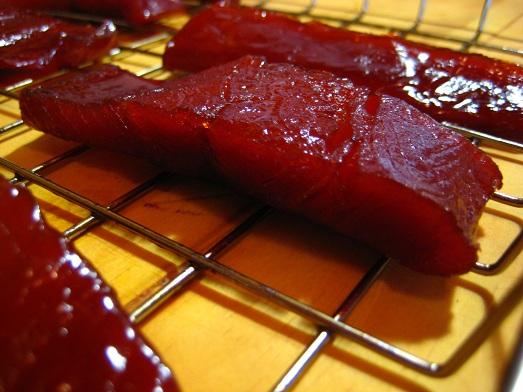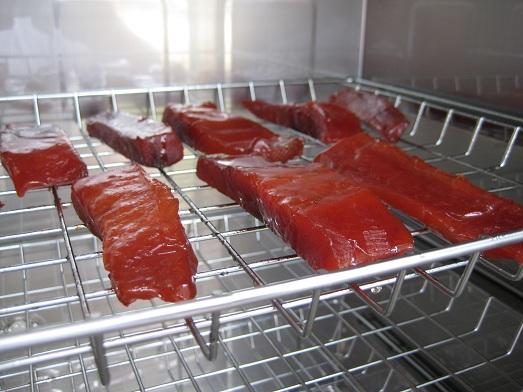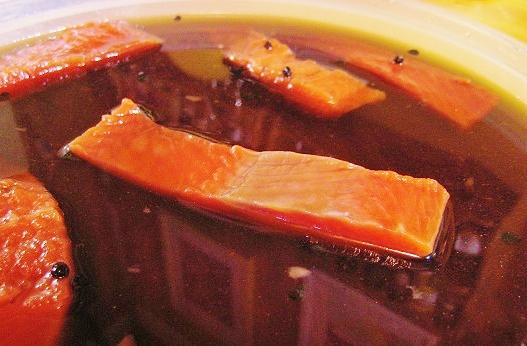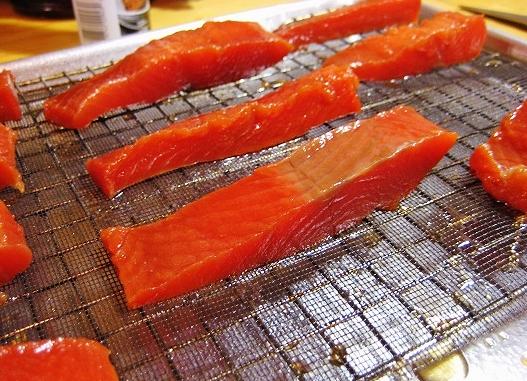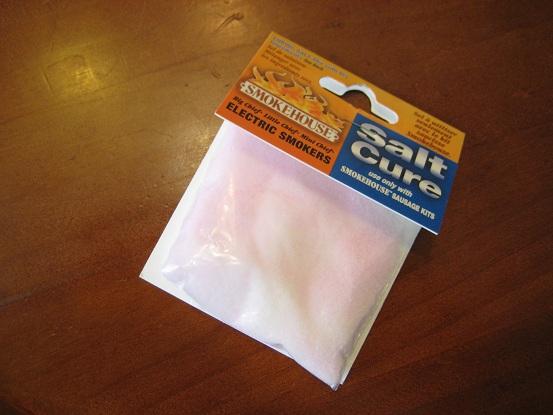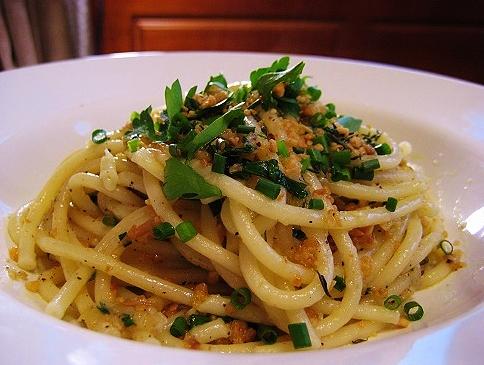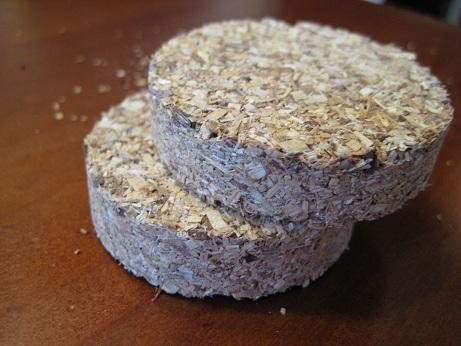-
Posts
5,035 -
Joined
-
Last visited
Content Type
Profiles
Forums
Store
Help Articles
Everything posted by David Ross
-
To my palate, it noticeably alters the taste..a little sweeter, earthier, nuttier. Something slightly different from normal cured salmon, somwehow. But it's pretty subtle. I like the differences from the typically cured salmon.
-

Groundbreaking Chefs Whose Food Has Seen Better Days
David Ross replied to a topic in Restaurant Life
This is my view on the WG Puck situation as well. Sure, his flagship spots may be good, but his name is also on a couple of places I wish he hadnt lent it to. Just because I feel his brand has taken a hit doenst mean I think its awful, I just dont think some of it lives up to his reputation as the only 2 time winner of the James Beard Best Chef award. I wouldn't consider Chef Puck's airport cafe's as flagship operations, but they serve consistently good food. I've been at the one in Denver a number of times and probably visit the Seattle airport cafe a couple of times a month. The pizzas, roast chicken, garlic fries and salads are consistently good and not much more money than the stuff sold by the national chains in airport food courts. In all honesty, I think his canned soups are pretty darn good too. -
Does the beet add just color or both color and flavor?
-

Groundbreaking Chefs Whose Food Has Seen Better Days
David Ross replied to a topic in Restaurant Life
And I'll add that the appetizers at CUT, (the Bone Marrow Flan with Onion Marmalade and the Veal Tongue Salad in particular), far surpass the offerings at any other Las Vegas Steakhouse. I know, you may think "Bone Marrow" is so 'meh.' Order it and it will change your mind. Chef Puck has a major impact on the menu and it shows in a level of creativity and innovation in his cuisine that continually puts him ahead of the pack. At least in Las Vegas. -

Groundbreaking Chefs Whose Food Has Seen Better Days
David Ross replied to a topic in Restaurant Life
In all due respect to those out there who feel Chef Puck has passed his prime, I disagree. His restaurants are consistently good to exceptional, from the pizza and sandwich shop I visit at Seattle Airport on a regular basis to CUT and Spago in Las Vegas. I personally think he's the rare Chef and Businessman who consistently puts the cuisine at the forefront of all his endeavors, which in turn creates the opportunities for success that his company has experienced. He hires talented people and insures the quality and consistency is always top-notch. Based on my experiences dining at his restaurants over the years, I can't quickly name another Chef whose accomplished that level of consistency and quality. I don't think he's seen better days and I fully think he's going to continue to make major contributions to the food scene. -
That roe looks absolutely fabulous. Truly what one calls "local" cuisine.
-
I think Walleye would be delicious smoked.
-
David, this is where the ceviche techniques are going to come into play. I'd do a lime and hot pepper 24-36 hour cure on them, then smoke over something quite strong, hickory maybe, for another 5-6 hours. Scallops done this way are amazing all on their lonesomes, or pan-seared to heat 'em up, with butter sauteed asparagus.... Thanks for the tips. I'm going to try it Friday.
-
I have the Bradley 6-rack digital smoker. They make a basic electric model without the digital controls that comes in a 4-rack and 6-rack version. It's probably about $100 cheaper than the unit I have. No, I don't leave it outside. They do have a cover you can buy to protect the smoker from the weather, but I keep mine in the garage. One side of my backyard isn't fenced and I'm too much of a worry-wart to let it sit on the patio without thinking someone is going to haul it away. I keep it on a furniture dolly in the garage so all I have to do is wheel it out to the patio when I'm ready to do some smoking. That way I can keep my eye on both the smoker and what's inside.
-
I've got some beautiful Sea Scallops. Anyone out there have a method for brining and smoking scallops?
-
David, would it be indiscreet, or incorrect given the title of the thread, to ask if you also used a stock for the pea puree? I ask because 1. this dish has really got to me and 2. the base liquid for the risotto is chicken stock and the majority of pea purée recipes I see use chicken stock also, although I did see one recipe which uses no stock at all - just butter, some echalotte and the peas. I remain curious and hopeful. Thank you, BB I think it's totally appropriate to share the Risotto recipe in this Cook-Off. Some of our Cook-Off's are "dish" driven like Hash. In that Cook-Off we discussed what goes into the dish. But in the case of this Cook-Off it's more "ingredient" driven aside from the technical aspects of curing, brining, smoking and salting fish. Having said that, this is the perfect format to discuss how we would use smoked fish in a dish, and I think that the creamy, sometimes earthy flavors of Risotto are a wonderful match to our specially cured seafood. This is Chef Alex Stratta's recipe that we did at the Uncork'd interactive luncheon. Chef says this recipe serves 6, but I think it would be pretty large portions for 6 with these quantities. The key to the flavor is the pea puree, but I also added whole peas. And yes, there is the addition of chicken stock--in the Risotto itself and then a rich chicken jus is poured on as a garnish. Sweet Pea Risotto with Wild Mushrooms- 6 servings 3 cups Vialone Nano rice 1 cup white onion, finely diced 3 tbsp. butter 1 3/4 cups dry white wine 10 cups white chicken stock 4 tbsp. pea puree 6 tbsp. butter 3/4 cup grated Parmigiano-Reggiano cheese 4 tbsp. whipped cream salt and pepper Pea Puree- 4 cups fresh peas, peeled and shucked salt and pepper Blanch the peas until tender in salted boiling water and chill in an ice bath. Puree in a food processor until smooth and pass the mixture through a tamis, (or mesh sieve). The mixture should be silky and smooth. Mushrooms- 2 cups fresh morels 1 tbsp. olive oil 2 tbsp. butter 1 tbsp. chopped Italian parsley Clean, pare and rinse the mushrooms well. Cut them into the same size and heat the olive oil in a havey pan over high heat. Allow the oil to get smoking hot and add the drained mushrooms. Saute briefly and add the butter and cook for one minute over high heat and simmer for 5 minutes. Season and finish with the parsley. (Chef says to serve the mushrooms on top of the Risotto, I stir them into the Risotto with bacon). Risotto- Pour chicken stock in a saucepan and bring to a simmer. In another heavy saucepan, melt the first 3 tbsp. of butter over low heat and add the onion and season slightly with salt. Sweat onions at low heat for approximately 8-10 minutes or until soft and transluscent. Deglaze with the white wine. Add the rice and coat well with the butter and onion mixture. Season again and turn the heat to medium. Stir the rice until it begins to crackle. At this point, add the white wine and bring to a simmer. Stir the rice until all of the liquid is evaporated. Add enough stock to cover the rice and continue to stir until all the liquid is again evaporated. Repeat steps four more times. The final "wetting" should not reduce all the way to dry. At this point, the rice should be slightly al dente loose and creamy. Add the grated cheese, pea puree, 6 tbsp. butter and whe whipped cream. (Chef describes it at this stage as a pudding-like Risotto). Garnish- 1/2 cup roasted chicken jus 12 shards Parmigiano-Reggiano cheese 4 tbsp. Manni Per Mio Figlio olive oil 2 tbsp. fresh pea shoots Spoon the Risotto in the center of a warm bowl and garnish with the mushrooms in the center. Drizzle around with the roasted chicken jus and the olive oil. Finish with the shavings of cheese and pea shoots.
-
Thanks for the recipe. I'll be trying it as soon as I can get some smelt.
-
Tonight I tried another dish using the Smoked Halibut Cheeks--and quite different from the dish with the Spring Pea Risotto. This time I went for a dish marrying the influences of the Northwest and Asia in a Ramen Noodle Dish. I started the broth by rehydrating some dried shitake mushrooms in boiling water to make a mushroom broth. Strained out the mushrooms and sliced them for the finished soup. Then into the mushroom broth went prepared dashi stock mix and dried nori seaweed, fresh grated ginger, a couple of dried chilies and then some Lapsang Souchong black Chinese tea. It's a very earthy, smokey tea that I thought would accent the smokiness of the Halibut Cheeks. The broth was simmered for about 30 minutes then strained. Into the finished broth went dried ramen noodles, the sliced mushrooms, sliced pickled radish, julienned carrot, asparagus and green onions. I quickly grilled the Halibut Cheek on the stovetop and added it to the ramen soup. Delicious flavors all accenting the smokiness of the Halibut. Smoked Halibut Cheek in Ramen- I've never tried smoked fish in a soup before this Cook-Off. Now I'm hooked.
-

Gordon Ramsay to headline on the Strip
David Ross replied to a topic in Southwest & Western States: Dining
After much ballyhoo, Gordon Ramsay Steak is set to open at Paris Las Vegas on Friday, May 11--the same night of the Grand Tasting at Vegas Uncork'd. Ramsay is scheduled to open the restaurant that night in addition to showcasing some of his signature restaurant dishes at the annual bacchanalia that is the Grand Tasting. You can read a press release about Gordon Ramsay Steak here. And don't forget to check in on our reports on Vegas Uncork'd here. If we're one of the fortunate few, we may be able to secure a seat in Ramsay's emporium and we'll report back on the Beef Wellington. -
Yes, you're seeing it clearly. It's nearly translucent like a hard, red Jolly Rancher piece of candy. It's really an amazing transformation from salmon to Indian Candy.
-
Thanks, it was a very good risotto. Different due to the addition of whipped cream and pea puree, and less than the usual amount of parmesan. It's more creamy and has more loft than most risotto's. And it went really well with the smoked halibut cheeks. I think it would go well with any fish actually.
-
The finished Indian Candy. Smoked Salmon unlike any other you've ever tasted- Now I'm on the search for some other sea creatures to cure and I'll be using the vacuum-sealing technique we've been discussing.
-
Here again are some shots of the interior of my Bradley Smoker- The smoker is large enough that I can hang whole trout, small fish and about an 8lb. salmon secured from the top rack or I can just let the flish lay flat on top of the racks. The drip pan on the bottom of the smoker. Water in the drip pan creates steam in the smoker and acts as an extinguisher of a used bisquette as it advances forward- I smoked the Indian Candy filets over alderwood at a temperature of 140 for about 5 hours. Trust me, I haven't gotten to the point where I'm fully confident with the temperatures or smoking times with this new contraption, so I wanted to start gently, test the finished salmon and then refine the technique next time. In the end, the Indian Candy turned out to the have just the right balance of smoke yet it wasn't over-cooked.
-
Thanks for adding the smelt to our Cook-Off. I remember the annual runs of smelt on the Columbia River. We could get them by the bucketful. I only remember frying them or smoking them. Tell us about the recipe for the pickling brine.
-
After 4 days of drying at room temperature, I brushed the filets with a mixture of 3/4 cup clover honey and 1/4 cup water. The maple syrup and brown sugar in the brine sweeten the meat of the salmon, and the honey is the "candy" glaze- Close-up shot of the brined, dried and glazed salmon on the rack ready for smoking- And into the smoker-
-
Smoked Salmon is a mythical dish to those of us who were born, raised and still reside in Pacific Northwest. Yet smoked salmon comes in hundreds of different versions based on the history and origin of the original techniques used. "Indian Candy" is the creation of Native Canadians who married the process of brining, drying and smoking salmon with pure maple syrup. I first had Indian Candy as an appetizer at the Waterfront Hotel in Vancouver, Canada. I remember the menu description led me to believe it was basically a smoked salmon dish with traditional garnishes--then the plate arrived at the table and I realized that I was in for a new experience--small logs of deep-red, almost transluscent salmon with a rich, oily sheen nestled alone on the plate. The salmon had a firm, yet soft texture, somewhere between cold-smoked salmon and what we know as salmon jerky. But it was anything but the dry, chewy texture of a jerky. The sweet flavor of Canadian Maple Syrup was counter-balanced by a good measure of salt. It was a revelation for me. I had never tasted smoked salmon so unique and so delicious. That's when I first fell in love with Indian Candy. The process of crafting Indian Candy at home took me literally a week--2 days of brining, 4 days of drying and 1 day of smoking. While I made a few mistakes along the way, (mistakes as in we cooks are never fully satisfied), it was well worth a week of worrying, fidgeting and anticipating the final results. I started with a whole side of Wild Alaska Sockeye Salmon. This was a frozen side of salmon that was caught last year. I cut the salmon into 1" wide filet strips and then let them sit in a brine for 48 hours. The brine- 8 cups water 1 cup pickling salt, (note the recipe called for pickling salt, not Kosher salt like I used on the Trout and the Halibut Cheeks). 2 cups dark brown sugar 1 cup maple syrup (The brine ended-up too salty for my tastes, so next time I'll reduce the salt by about 1/2, increase the water by 2 cups and I'll cut the brining time from 48 hours to 36 or less. I'm also going to rinse the salmon in cold water after I take it out of the brine to wash off some of the saltiness before I dry the fish)- Into the brine- Out of the brine and ready for a long drying out- Most recipes call for drying the salmon for 1-2 days. I really stretched it on this point and dried the salmon, uncovered, at air temperature, for 4 days. I checked the salmon by touch each day to make sure it wasn't getting to dry and still had some spring to the flesh and was developing a sheen on the surface. The idea is to dry the meat and concentrate the flavors, yet not take it to the point where the flesh is fully dried-out. Next up, the smoking process.
-
Anybody use pink salt or sodium nitrite to cure fish? I always thought it was only used for meat and primarily to set a natural red color in the meat. What would it do to fish?
-
The bisquettes I use in the Bradley Smoker are made up of fine wood shavings compressed into this disk that's about 2" in diameter. Of course, bigger chunks of wood or fine shavings won't work in the Bradley because the bisquettes are automatically fed through a tube on to a heating element. The heating element is set low enough to create low smoke from the wood. So far I've found it to be a fail-safe process and there are enough varieties of wood that I'll be able to smoke anything. I really hate those fine wood chips that you use in a stove-top smoker. They seem to burn even at very low temperatures.

